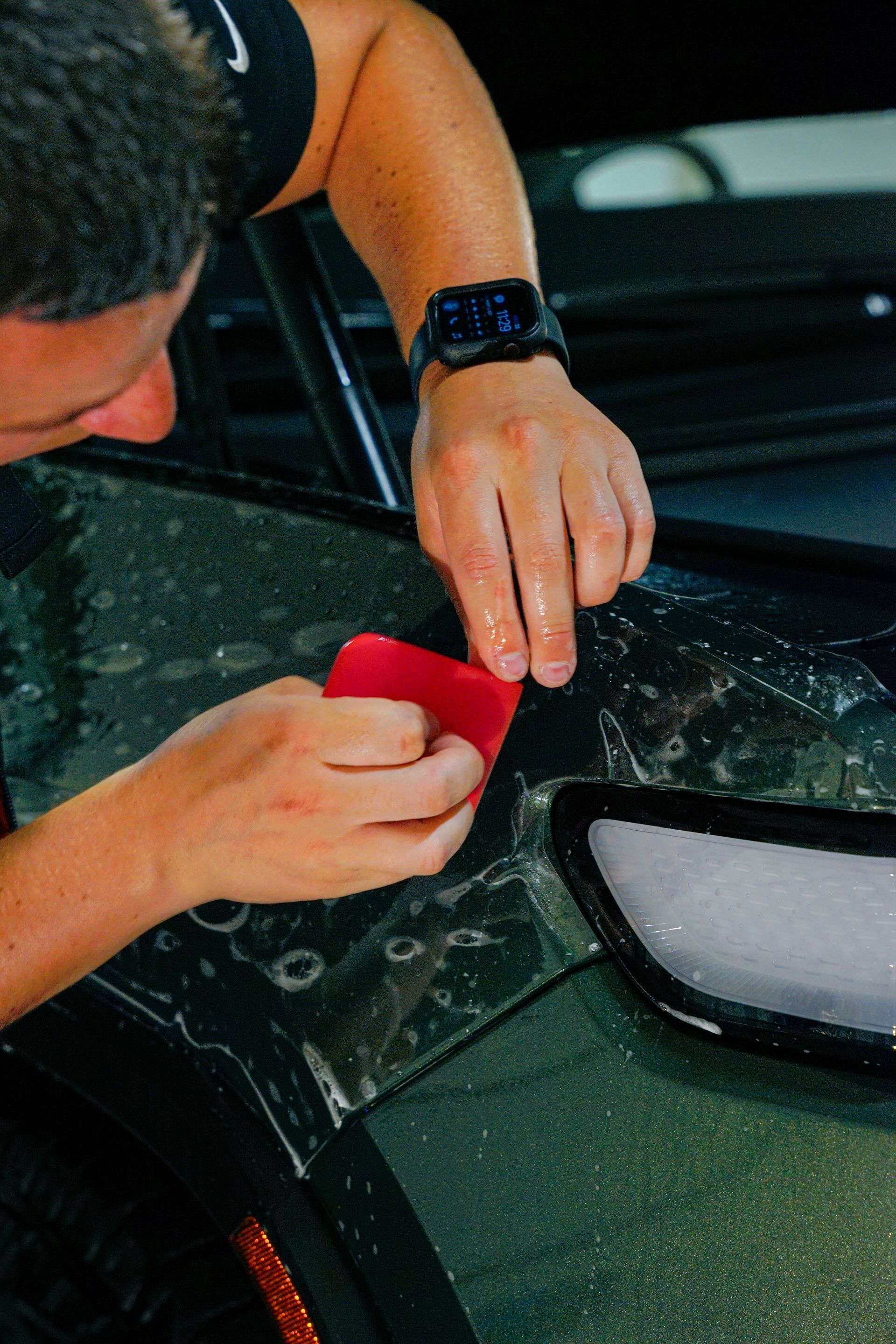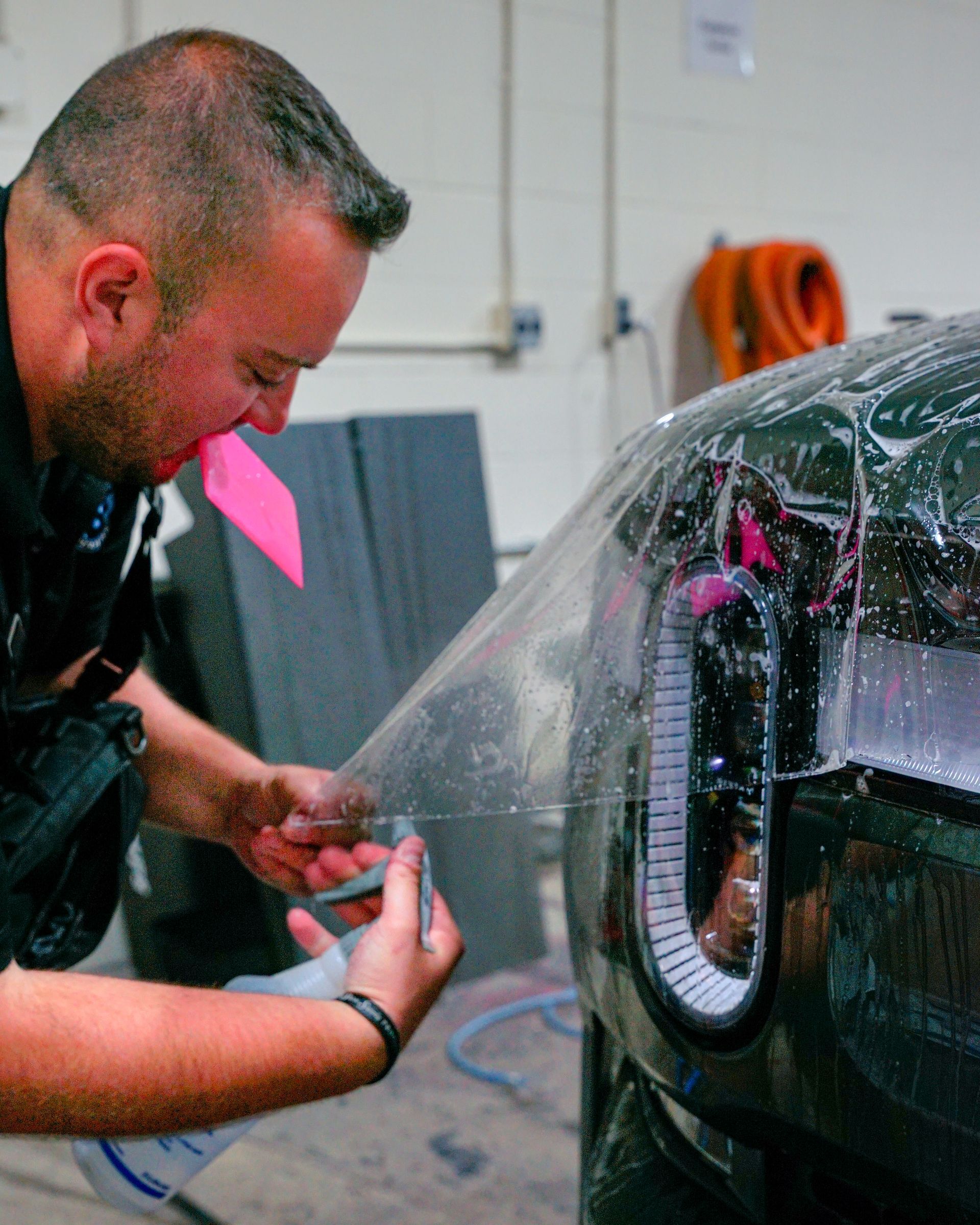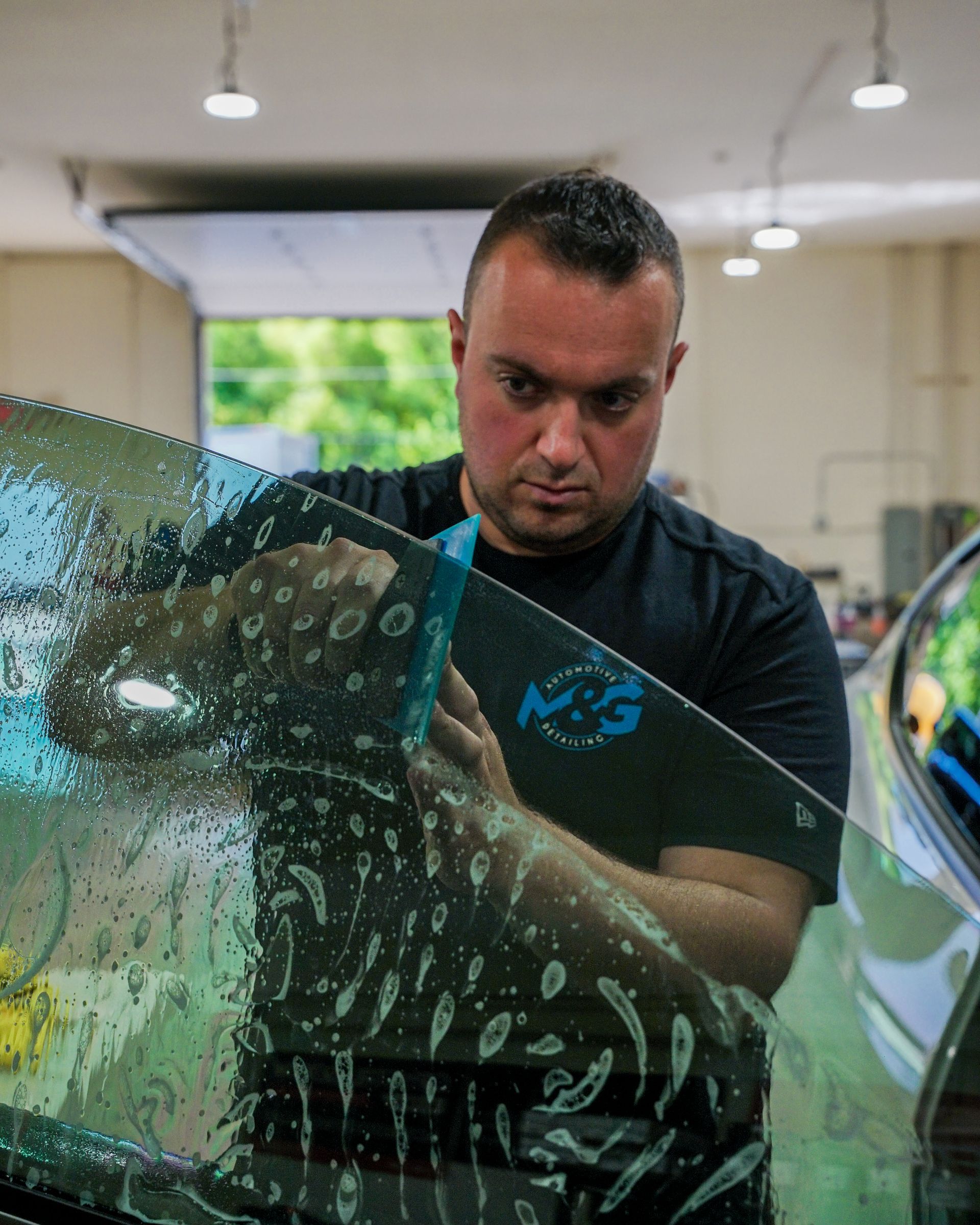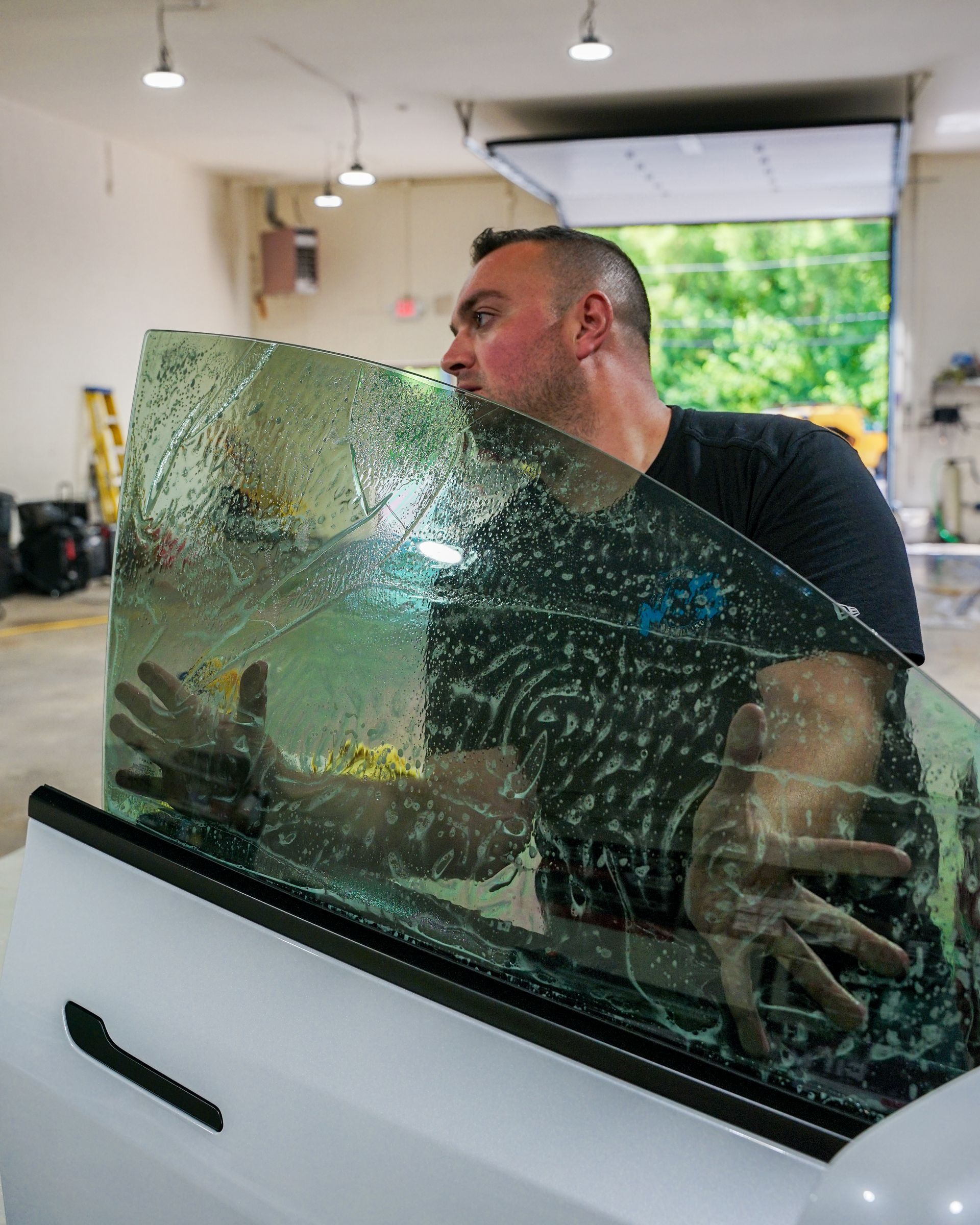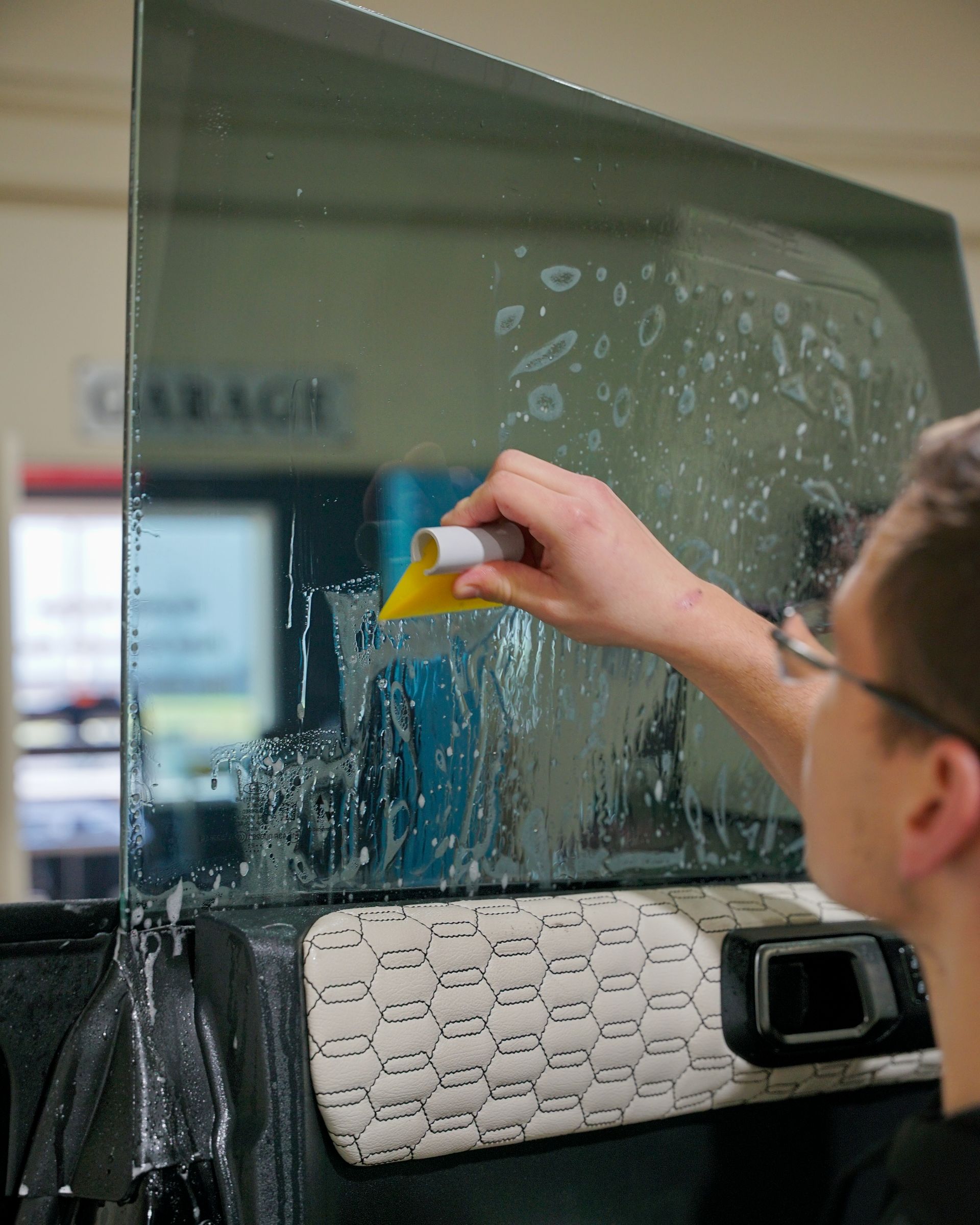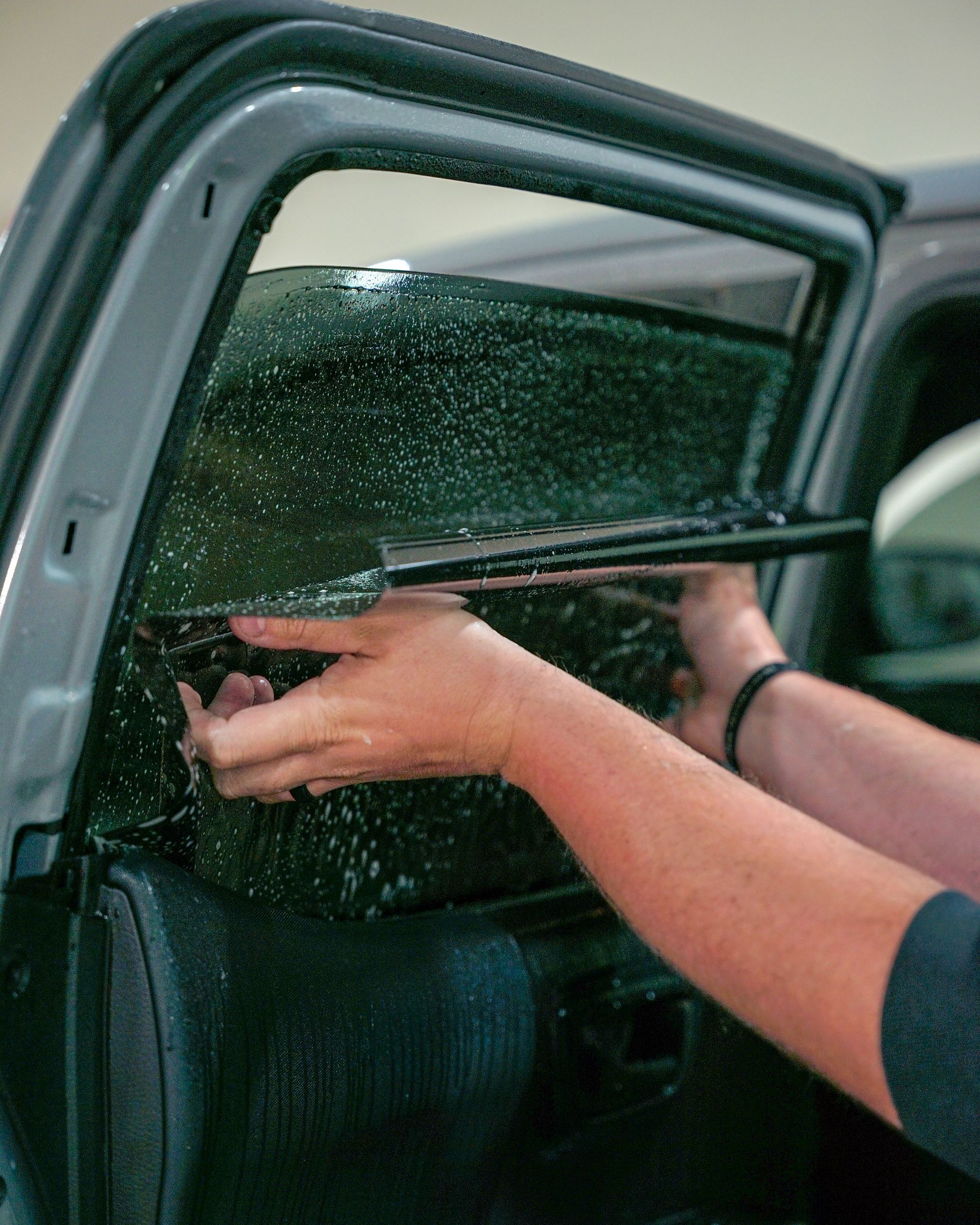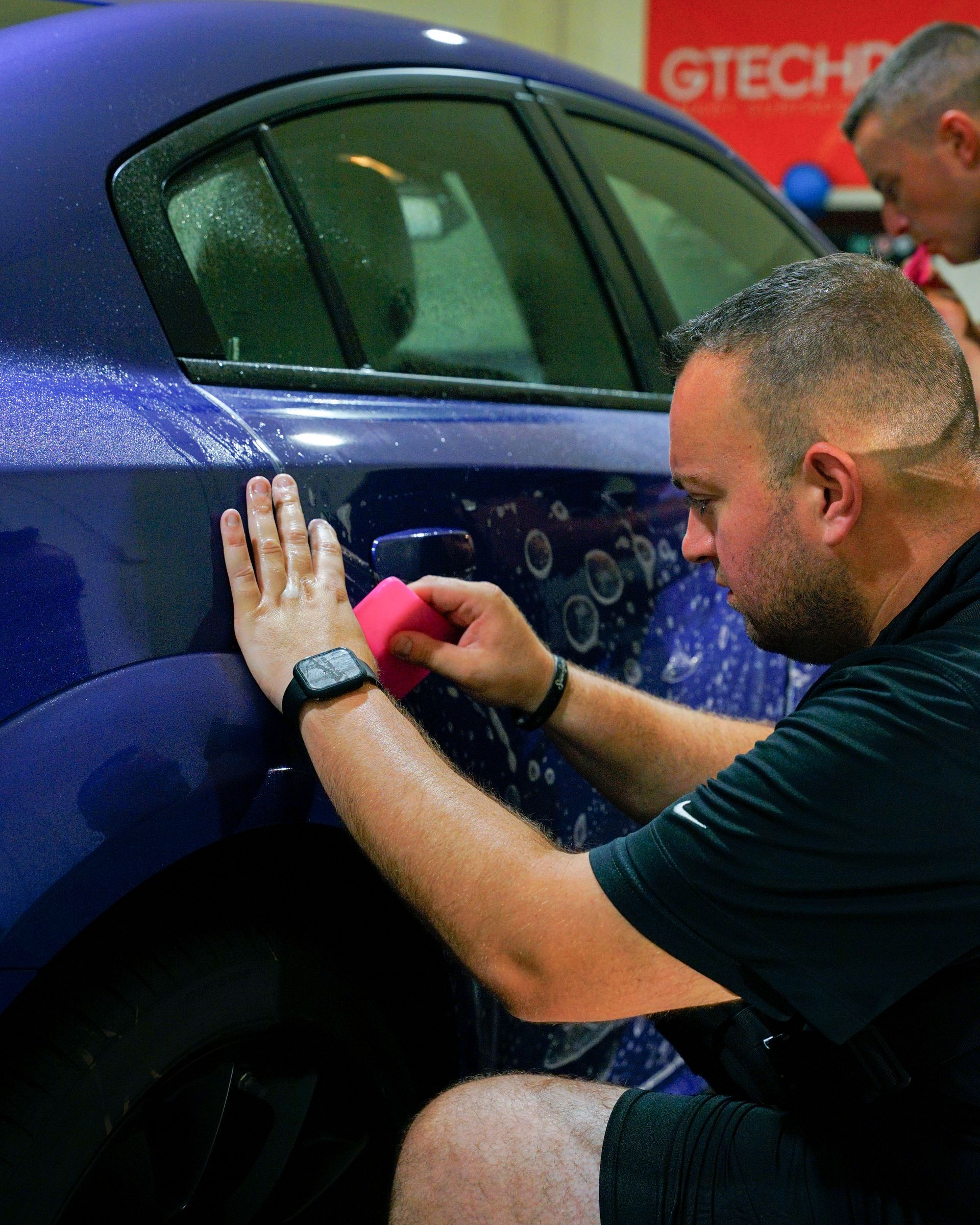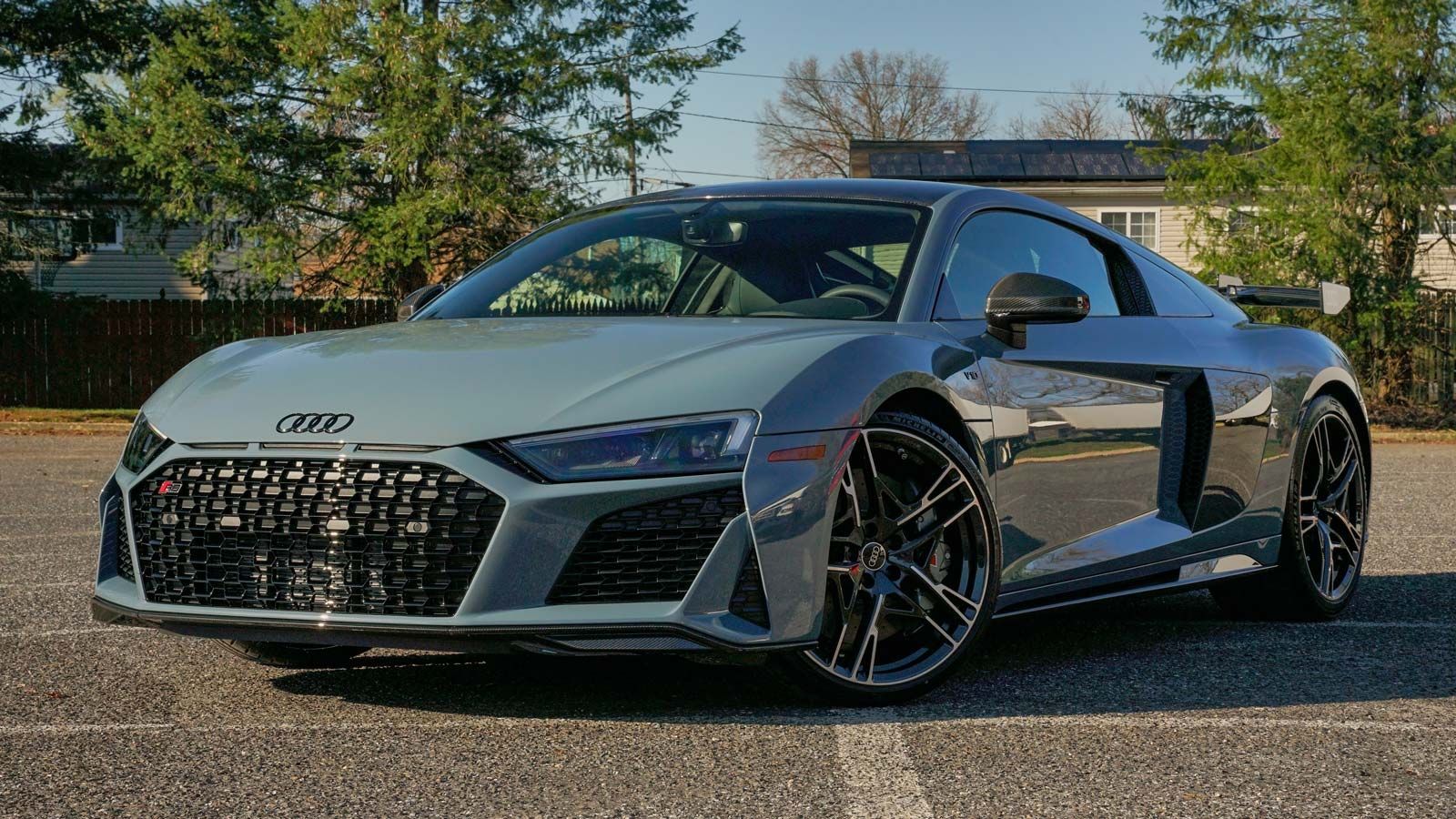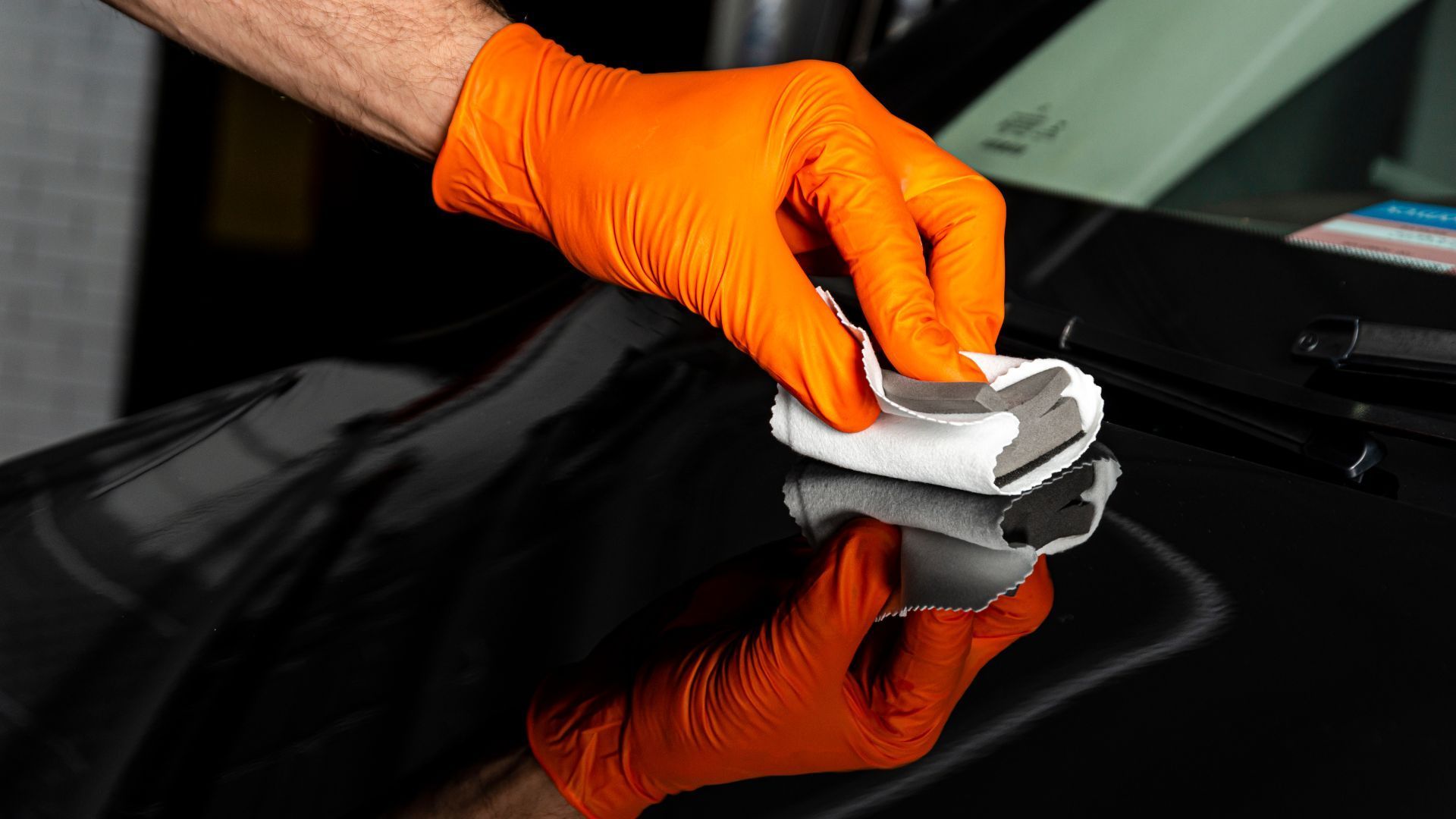Vehicle Tinting: Preventing Interior Overheating With Effective Heat Protection
When it comes to keeping your car comfortable and your interior looking great, window tinting is a game-changer. You might think of tinting as just a cool look, but it's so much more than that. Imagine stepping into your vehicle on a hot summer day and not being hit by a wave of heat—sounds amazing, right? With the right tint, you can lower the temperature inside your car while also blocking those pesky UV rays that can cause fading and damage over time. That’s why taking a closer look at vehicle tinting isn’t just a nice-to-have; it’s an essential step toward extending the life of your car and enhancing your driving experience. Let's dive into how effective heat protection can make your ride much more enjoyable!
Tinting plays a significant role in preventing interior overheating in vehicles by reflecting a substantial percentage of solar heat away from the glass surfaces, thereby reducing the overall temperature inside the car. By blocking harmful UV rays and allowing for better climate control, window tinting not only enhances passenger comfort but also protects interior materials from fading.
Heat Reduction Through Window Tinting
When you think about the summer sun blazing down on your vehicle, you may envision the sweltering heat that greets you when you open the door. However, this can be significantly mitigated by opting for high-quality window tinting. As car owners, we all seek comfort, which includes creating a more bearable interior temperature to protect our skin and our vehicles’ components from damage caused by harsh sunlight.
Did you know that some tints claim to block up to 99% of harmful UV rays? This is especially essential for maintaining your car’s interior and preserving its aesthetic appeal over time. Sun damage can lead materials like leather and plastic to crack and fade, ultimately impacting both the look and resale value of your vehicle. Keeping upholstery intact is yet another reason to consider heat-reducing window films as an essential investment.
Moreover, ceramic tinting films have gained immense popularity due to their effectiveness in blocking heat while still allowing adequate visible light into the cabin. Unlike traditional films, they resist fading and are less likely to interfere with electronic signals such as GPS and satellite radio. That's right; no more pesky interruptions just because you decided to keep your car cool! As we explore further, it's important to recognize how these protective measures can also contribute significantly to enhancing safety and efficiency within the vehicle environment.
Advantages for Vehicle Interiors
Window tinting goes beyond just a sleek appearance; it offers vital protection for your vehicle’s interior. Over time, the sun's relentless rays can wreak havoc on your car’s upholstery and dashboard materials. From fading colors to cracked vinyl, the damage incurred by consistent sun exposure can be costly, leading to expensive repairs or replacements. However, tinted windows act as a shield, filtering out up to 99% of harmful UV rays, thus helping to preserve the integrity of your car’s interior.
Extending Longevity of Interiors
Regularly investing in window tinting is like giving your vehicle a long-term insurance policy. By blocking detrimental UV rays, you effectively extend the life of your interiors. Fabrics and materials used in vehicles today are designed for comfort and style, but they aren't invincible against the sun's unyielding power. Think about it: a simple yet effective solution can save you from needing costly reupholstering much sooner than expected. Considering the return on investment in window tinting is crucial when contemplating enhancements for your vehicle.
To fully appreciate these benefits, one must understand the various tinting materials available, as they each offer unique properties suited for different needs and preferences. Selecting the right type can maximize both aesthetics and functionality, ensuring you enjoy all the rewards of your investment in protecting what is often one of our biggest assets: our vehicle. This pivotal choice sets the stage for understanding how different materials influence not just looks but overall effectiveness in heat protection.
Different Tinting Materials Explained
When it comes to vehicle tinting, not all films are created equal. Let's explore the four primary types of materials available for automotive window tinting and their unique characteristics.
- Dyed Films: Dyed films are often regarded as the most budget-friendly option on the market. This type of tint absorbs solar heat, reducing glare while providing a sleek, dark appearance to your vehicle's windows. However, it's essential to note that dyed films do not offer the same level of heat rejection as other materials—think of them as stylish sunglasses without UV protection. Over time, exposure to sunlight can cause these films to fade, making regular maintenance crucial if you choose this economical option.
- Metalized Films: Moving up from dyed films, we have metalized films, which incorporate tiny metallic particles to reflect heat and ultraviolet rays effectively. This reflective quality makes them highly efficient at keeping your vehicle's interior cool. Imagine sitting in a car during a sweltering summer day; metalized tints can make a noticeable difference in maintaining a comfortable temperature. However, one downside is that these films can interfere with radio and GPS signals, much like how tall buildings can affect cell reception. Therefore, if you're heavily reliant on technology in your vehicle, this might be something to consider.
- Hybrid Films: A middle ground between dyed and metalized options is hybrid films. These solutions combine the best attributes of both previous types: they provide effective heat rejection while minimizing signal interference associated with metalized films. Hybrid tints are a great balance of cost and performance without sacrificing functionality too much. They represent an excellent choice for those who want a good mixture of affordability and effectiveness.
- Ceramic Films: Finally, we arrive at ceramic films, which stand as the premium option available today. They excel by blocking up to an impressive 50% of solar heat and an astonishing 99% of harmful UV rays while maintaining high visibility inside your vehicle. Unlike other materials, ceramic films are designed to withstand fading over time, making them incredibly durable despite their higher price tag. For those who view long-term investments in comfort, safety, and aesthetics as worth the extra cost, ceramic films represent an excellent choice.
Once you grasp the various types of materials available for tinting, it's equally important to consider the regulations and implications surrounding this installation process.
Legal and Safety Aspects
Laws surrounding window tinting are designed not only to keep vehicles looking stylish but also to ensure adequate visibility for drivers on the road. Understanding the legal requirements in your region is essential before investing in window tinting. Each area has specific regulations detailing permissible levels of Visible Light Transmission (VLT), which indicates how much visible light can pass through the tinted windows. For instance, some states in the United States allow a VLT as low as 20%, while others mandate a significantly higher minimum of 70% for front windows. These laws balance the aesthetic appeal of tinted windows with ensuring that drivers can see clearly while navigating traffic. Moreover, stringent regulations prevent potential accidents caused by impaired visibility—keeping you and other road users safe.
Research supports these laws; a study conducted by the Insurance Institute for Highway Safety revealed that regions with stricter tinting laws tend to report lower accident rates associated with diminished visibility. It’s also important to check local regulations regularly as they can change, and non-compliance could lead to fines or having to remove the tint altogether. Beyond legality, consider whether darker tints might affect sensor operation, particularly for rain-sensing wipers or rearview cameras, which could create unexpected problems down the road. While considering these legal aspects, it's equally important to assess safety concerns to make an informed decision that benefits both you and your vehicle. Now, let's explore what goes into determining the expenses involved in this process and how to navigate them effectively.
Installation Costs and Steps
The cost of window tinting can fluctuate significantly based on various factors, including the type of film chosen and the size of your vehicle. For instance, if you’re deciding on a dyed film—one of the most economical options—you might be looking at prices starting as low as $100 for an entire car. On the other end of the spectrum, more advanced films such as ceramics can range from $600 to $800. Of course, these are average figures, and actual prices may vary depending on your location and the specific services offered by local installers.
- Evaluation and Selection: Begin by thoroughly assessing your needs. Consider why you want to tint your windows in the first place. Is it for privacy, UV protection, or perhaps you're looking to reduce interior heat significantly? Once you've established your goals, set a budget that reflects what you're willing to invest in achieving those benefits. Remember that while lower-cost solutions like dyed films offer adequate performance for some users, investing in higher-quality films may yield better long-term satisfaction regarding durability and effectiveness. Tip: Always research vendor reviews and ask for samples of the films so you can see how they’ll look on your own vehicle before making a decision.
- Professional Installation: Opting for professional installation is crucial. While there may be tempting DIY kits available, attempting to install window tint yourself can lead to frustrating results—think bubbles or uneven surfaces. Professional installers have the experience and tools needed to apply tint in optimal conditions, often in controlled, dust-free environments. This creates a seamless application that enhances not only the appearance but also the longevity of the tint job. Moreover, many reputable installers offer warranties, providing peace of mind should any issues arise down the line. Insider Insight: When selecting an installer, don't hesitate to ask about their experience with your vehicle model, as some shapes can be trickier than others.
- Post-Installation Care: After installation, follow-up care is just as important as the steps that precede it. To allow proper adhesion, refrain from rolling down your windows for at least three days—this period gives the adhesive ample time to cure and bond effectively with each window surface. Additionally, it’s wise to avoid cleaning your tinted windows for about a week. When you do clean them afterward, opt for gentle solutions; avoid ammonia-based products as they can cause damage to the tint over time.
By maintaining careful attention both before and after installation, you'll ensure that you reap the full benefits of your new windows while maximizing their lifespan. Now let's look at how to maintain your tint and explore its long-term effects.
Maintenance and Long-Term Effects
Regular maintenance is not just a good idea; it’s essential for keeping your window tints looking fresh and functioning properly. Effective maintenance ensures that the tint remains effective against heat and visually appealing throughout its lifespan. Let’s face it—nobody enjoys driving around in a vehicle with peeling or fading window film.
To keep your tints in top condition, always clean the windows using a soft cloth along with a gentle, non-abrasive cleaner. It's crucial to steer clear of ammonia-based products—they can degrade the tint and lead to premature wear, thus shortening its life expectancy. Instead, opt for cleaners specifically designed for tinted windows, as they are gentle on the film while still effectively removing fingerprints and smudges.A small effort in maintaining those tints will pay off in spades, as studies indicate well-maintained tints can last up to ten years, significantly outlasting poorly cared-for films.
Over time, the long-term use of window tints translates into considerable cost savings by minimizing the need for air conditioning due to decreased solar heat gain. It’s not just about saving money; maintaining a cooler cabin temperature contributes directly to an enhanced driving experience. Picture this: driving comfortably on a sweltering summer day without breaking a sweat—who wouldn’t prefer that?
More than reducing heat, tinted windows also protect your vehicle's interior from harmful UV rays, which can cause your upholstery to fade and deteriorate over time. This simple yet effective layer of protection helps preserve the aesthetic value of your car's interior while also maintaining its resale value. Regular maintenance can make this protection last longer.
With these tips in mind, you'll ensure that your tint looks great and functions well throughout its lifespan, giving you both comfort and peace of mind on every drive. Proper maintenance of vehicle tinting not only enhances the visual appeal but also maximizes its protective benefits, offering significant long-term rewards for both comfort and resale value. By investing a little time in care, you're ensuring a better driving experience for years to come.
Professional Auto Window Tinting in Cherry Hill, NJ
M&G Automotive Detailing offers high-quality auto window tinting services in Cherry Hill, NJ, designed to enhance both the style and comfort of your vehicle. Their expert technicians use top-grade films that provide superior UV protection, reduce glare, and maintain your privacy, all while improving the overall aesthetic of your car. Whether you're looking to protect your interior or achieve a sleek, sophisticated appearance, M&G Automotive Detailing has the perfect window tinting solution for you.
